PLOT
The opera consists of two parts – a Prologue and the Opera proper.
In the prologue, set in Vienna, two competing music troupes (a burlesque and an opera seria company) compete over which gets to perform first. Unfortunately, they learn that the two performances must take place at the same time. The composer is ultimately convinced to incorporate the other group into his opera, much to his dismay.
The second part is the opera itself and relates Ariadne as she struggles with being abandoned on the island of Naxos by her former lover Theseus. Zerbinetta and a few members of her troupe appear and tell Ariadne to consider finding another man, which will ease her pains. The God Bacchus arrives and after some exchanges with Ariadne promises to set her in the heavens as a constellation. Zerbinetta remarks on how new love cures all and the two new lovers sing a duet that ends the opera.
ACT BY ACT
"Ariadne on Naxos"
Prologue and Opera
Sung in German
About 2 hours 10 min + interval
Ariadne auf Naxos is in two parts, called the Prologue and the Opera. The first part shows the backstage circumstances leading up to the second part, which is in fact an opera within an opera.
Prologue
At the home of the richest man in Vienna, preparations for an evening of music are under way. Two troupes of musicians and singers have arrived. One is a burlesque group, led by the saucy comedienne Zerbinetta. The other is an opera company, who will present an opera seria, Ariadne auf Naxos, the work of the Composer. Members of the two companies quarrel over which performance should be presented first. However, the preparations are thrown into confusion by an announcement by the Major-domo. The dinner for the assembled guests has run longer than planned. Therefore, both performances must take place at the same time as they have been ordered and paid for. The performances must not run one minute later than scheduled, despite the late start, since at nine o'clock there will be fireworks in the garden.
At first, the impetuous young Composer refuses to discuss any changes to his opera. But his teacher, the Music Master, points out that his pay depends on accepting the situation, and counsels him to be prudent, and Zerbinetta turns the full force of her charm on him, so he drops his objections. The cast of the opera seria intrigue against each other, each demanding that his arias be not cut while the other performers' parts are cut instead. A dancing master introduces Zerbinetta into the plot, which she understands from her very own perspective, and she gets ready for the performance. The Composer realizes what he has assented to, plunges into despair and storms out.
Opera
Ariadne is shown abandoned by her former lover, Theseus, on the desert island of Naxos, with no company other than the nymphs Naiad, Dryad, and Echo. Ariadne bewails her fate, mourns her lost love, and longs for death. Zerbinetta and her four companions from the burlesque group enter and attempt to cheer Ariadne by singing and dancing, but without success. In a sustained and dazzling piece of coloratura singing, Zerbinetta tells the Princess to let bygones be bygones and insists that the simplest way to get over a broken heart is to find another man. In a comic interlude, each of the clowns pursues Zerbinetta. Eventually, she chooses Harlequin, a baritone, and the two sing a love duet together while the other clowns express frustration and envy.
The nymphs announce the arrival of a stranger on the island. Ariadne thinks it is Hermes, the messenger of death, but it is the god Bacchus, who is fleeing from the sorceress Circe. At first they do not understand their mistaken identification of each other. Bacchus eventually falls in love with Ariadne, who agrees to follow him to the realm of death to search for Theseus. Bacchus promises to set her in the heavens as a constellation. Zerbinetta returns briefly to repeat her philosophy of love: when a new love arrives, one has no choice but to yield. The opera ends with a passionate duet sung by Ariadne and Bacchus.
ROLES
The prima donna/Ariadne – Soprano (dramatic)
A soprano performing the role of Ariadne in the opera within the opera
The tenor/Bacchus – Tenor (Helden/dramatic)
A tenor who peforms the role of god Bacchus who falls in love with Ariadne in the opera within the opera
Zerbinetta – Soprano (lyric coloratura)
A member of a commedia dell'arte group
Harlequin – Baritone (lyric)
A member of a commedia dell'arte group
Scaramuccio – Tenor (buffo)
A member of a commedia dell'arte group
Truffaldino – Bass (buffo)
A member of a commedia dell'arte group
Brighella – High tenor (buffo)
A member of a commedia dell'arte group
The composer – Soprano/Mezzo-soprano (Lyric, dramatic)
The composer of the opera being performed within the opera
The music master - Baritone (lyric)
The composer's teacher
The dancing master - Tenor (buffo)
A wigmaker – Baritone/High bass
A lackey – Bass
An officer – Tenor
Naiad – High Soprano (lyric)
A nymph
Dryad – Contralto
A nymph
Echo – Soprano (soubrette)
A nymph
COMPOSER
Richard Strauss
1864-1949
Place of birth: Munich, Germany
Place of death: Garmisch-Partenkirchen, Germany

BIOGRAPHY
Richard Strauss was a German composer, conductor, pianist, and violinist. Considered a leading composer of the late Romantic and early modern eras, he has been described as a successor of Richard Wagner and Franz Liszt. Along with Gustav Mahler, he represents the late flowering of German Romanticism after Wagner, in which pioneering subtleties of orchestration are combined with an advanced harmonic style.
Strauss's compositional output began in 1870 when he was just six years old and lasted until his death nearly eighty years later. While his output of works encompasses nearly every type of classical compositional form, Strauss achieved his greatest success with tone poems and operas. Other well-known works by Strauss include two symphonies, lieder (especially his Four Last Songs from 1948), the Violin Concerto in D minor (1882), the Horn Concerto No. 1 (1883), Horn Concerto No. 2 (1943), his Oboe Concerto and other instrumental works such as Metamorphosen (1945).
In addition to his formal teachers, Strauss was profoundly influenced musically by his father who made instrumental music-making central to the Strauss home. His father further assisted his son with his musical composition during the 1870s and into the early 1880s, providing advice, comments, and criticisms.
In 1933 Strauss was appointed to two important positions in the musical life of Nazi Germany: head of the Reichsmusikkammer and principal conductor of the Bayreuth Festival. However, Strauss's daughter-in-law, Alice Grab Strauss, was Jewish and much of his apparent acquiescence to the Nazi Party was done in order to save her life and the lives of her children (his grandchildren).
Strauss met his future wife, soprano Pauline de Ahna, in 1887. De Ahna was then a voice student at the Munich Musikschule, but soon switched to private lessons with Strauss who became her principal teacher. In 1897, the Strausses’ only child, their son Franz, was born.
In 1949 he suffered from a heart attack and he died of kidney failure quietly, in his sleep in Garmisch-Partenkirchen, West Germany. Strauss's wife, Pauline de Ahna, died eight months later, at the age of 88.
COMPOSER'S QUOTE
“The human voice is the most beautiful instrument of all, but it is the most difficult to play.”
"Never look encouragingly at the brass, except with a short glance to give an important cue."
FUN FACTS
Richard Strauss wrote his first composition, aged six. Wagner's music had a huge impact on his musical development.
Most prominent operas
Salome 1905
Elektra 1909
Der Rosenkavalier 1911
Ariadne auf Naxos 1912 (1916)
Die Frau ohne Schatten 1919
Arabella 1933
Daphne 1938
Capriccio 1942
LIBRETTO
Hugo von Hofmannsthal
1874-1929
Hugo Laurenz August Hofmann von Hofmannsthal was an Austrian prodigy, a novelist, librettist, poet, dramatist, narrator, and essayist. In 1900 Hofmannsthal met the composer Richard Strauss for the first time. He later wrote libretti for several of his operas, including Elektra, Der Rosenkavalier, Ariadne auf Naxos, Die Frau ohne Schatten, Die ägyptische Helena, and Arabella.
SCORE
DOWNLOAD THE SCORE
INSTRUMENTATION
2d2, 2, 2d1, 2 - 2, 1, 1, 0
timp, perc, harp, harmonium, celesta, piano, strings
CONTEXT
There are two versions of Ariadne auf Naxos. The original 30-minute divertissement premiered in 1912 as part of Hofmansthal's adaptation of Molière's play Le Bourgeois gentilhomme. The second version first premiered at the Vienna State Opera in 1916. This is the version that is normally staged today.
Today Ariadne auf Naxos is one of the top 50 most performed operas worldwide.
VIDEOS
FULL LENGTH OPERA
Prologue
Aria – Sein wir wieder gut (The composer)
Opera
Aria – Ein Schönes war (Ariadne)
Aria - Großmächtige Prinzessin (Zerbinetta)

















